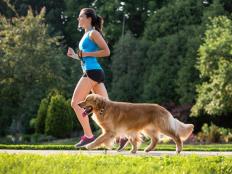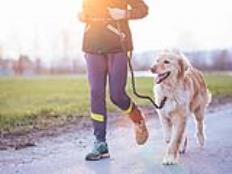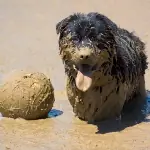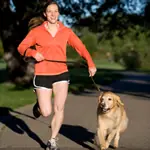How to Encourage Best Behavior From Your Dog
My dog mistakes my ankles with a chew toy; how do I deter this?
Start out with a slow leash-walking program to help combat this annoying habit. Keep a rope toy or other type of tug toy handy to help him focus on the appropriate item to grab.
If you teach your puppy early on how to walk politely next to you and increase the speed slowly, by the time your pup is six months and you've begun increasing distance, he should understand the game of running next to you, and keep his teeth to himself. If he continues biting at your heels, all motion should stop and he should be redirected to something appropriate. Go back to the basics—reward his moving next to you without nipping at your heels. Then, slowly progress again in speed.
How do I keep my dog from being distracted by anything and everything in our path?
The best way to keep your dog from being distracted mid-run is to teach a solid "leave it" cue. When you are first starting out, always carry some yummy treats such as hot dogs or cheese to reward him for keeping his attention on you or the task at hand. This is where practicing polite leash manners in the very beginning comes into play. If your dog learns that you are the best thing around (or at least that you carry the best stuff) you will have much more success keeping his attention in higher distraction areas.
There are no guarantees, however. Even the best-trained dogs may have a hard time resisting that fuzzy bunny running across the neighbor's lawn. Carrying a small squeak toy and/or irresistible food is your best defense against distraction or at least getting him back on track when he is faced with such temptation.
Going the Distance With Your Pooch
How quickly can my puppy progress with mileage?
The rate greatly depends on the individual dog. In general, a good progression would be to increase a half-mile every few weeks, and always monitor your puppy during and after any increases.
What are the cues that I'm progressing too fast?
Any prolonged lethargy after a run, noticeable soreness, limping or difficulty in getting up or lying down are good indications you've pushed your pup too far. Other signs could be reluctance to continue in the run or refusal to even start a run. Your pup may slow down or even stop altogether mid-run. These are all signs that should be heeded.
- 2
- of
- 3
About the Author

Get ACTIVE on the Go


Couch to 5K®
The best way to get new runners off the couch and across the finish line of their first 5K.
Available for iOS | Android







Discuss This Article